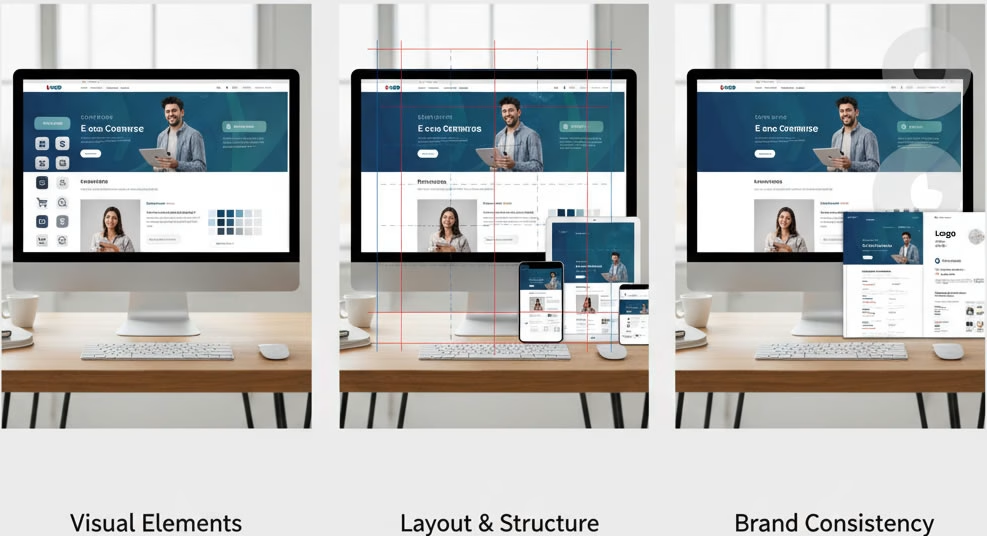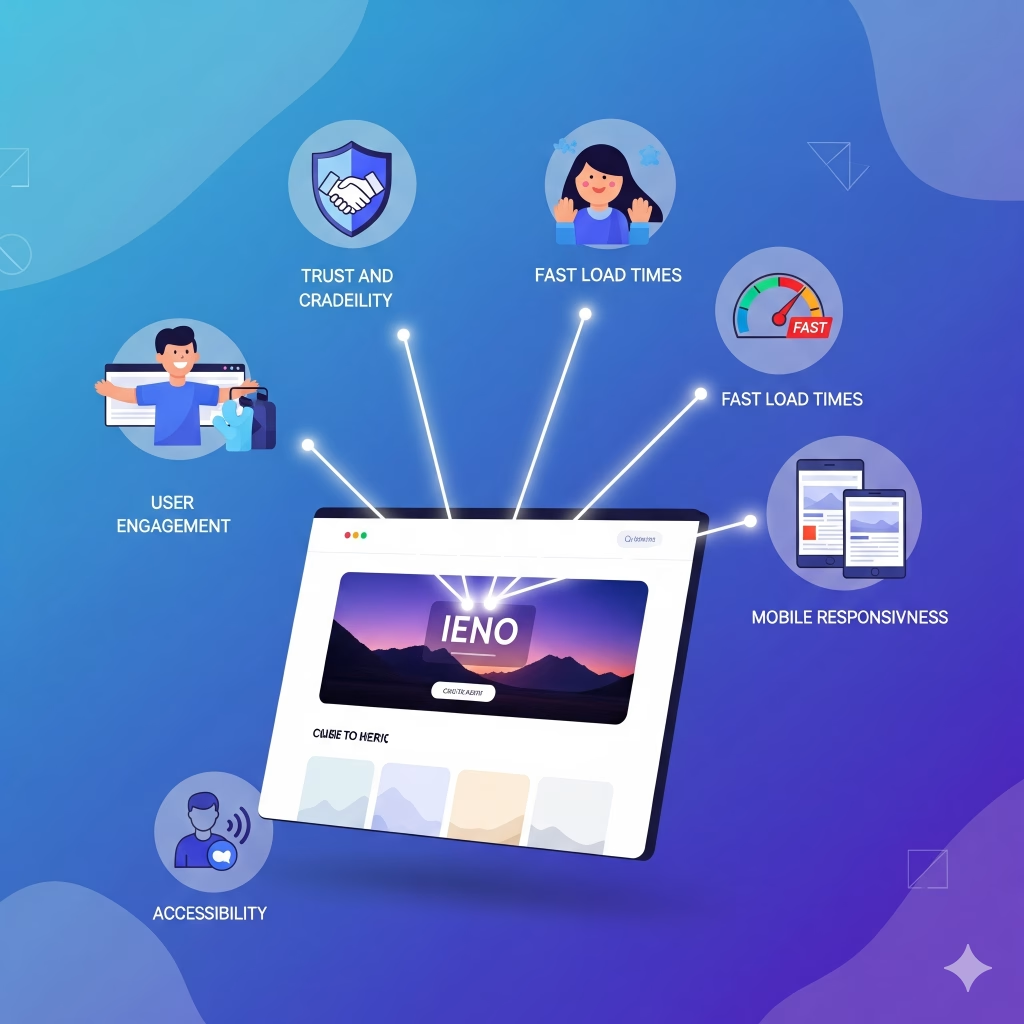
1. UI (User Interface) Design
- Visual Elements: Buttons, icons, typography, color schemes, and images.
- Layout & Structure: Wireframing, spacing, grids, and responsive design.
- Brand Consistency: Ensuring the design aligns with brand guidelines.
2. UX (User Experience) Design
- User Research: Understanding user needs through surveys, personas, and usability testing.
- Information Architecture (IA): Organizing content logically (e.g., sitemaps, navigation).
- Interaction Design: Defining how users interact with elements (e.g., hover effects, animations).
- Prototyping & Testing: Creating mockups (Figma, Adobe XD, Sketch) and validating usability.

3. Front-End Development
- HTML: Structuring content semantically.
- CSS/Sass/Less: Styling layouts with modern techniques (Flexbox, Grid, animations).
- JavaScript: Adding interactivity (e.g., form validation, dynamic content).
- Frameworks/Libraries: React, Vue.js, Angular for building dynamic interfaces.
- Responsive Design: Ensuring compatibility across devices (mobile, tablet, desktop).
4. Performance & Optimization
- Page Speed: Optimizing images, lazy loading, and minimizing code.
- SEO Basics: Semantic HTML, meta tags, and accessibility for search engines.
- Cross-Browser Compatibility: Testing on Chrome, Firefox, Safari, etc.
5. Accessibility (A11y)
- WCAG Compliance: Proper contrast, keyboard navigation, ARIA labels.
- Screen Reader Support: Semantic HTML and alt text for images.
6. Tools & Workflow
- Design Tools: Figma, Adobe XD, Sketch.
- Version Control: Git (GitHub, GitLab).
- Build Tools: Webpack, Vite, npm/yarn.
- Testing: Browser DevTools, Lighthouse, Jest.
You can reach out to us and we at Wemaxa.com would be happy to help you in designing your first website’s front end as well as the back end, help you integrate a dedicated mail server and protect your website against hackers and spammers.
MORE LINKS:
Mobile version of a site
Seo optimized design
Technology for frontend?
Match existing branding
I need animations?!
How long it takes?
Preview the design
Provide source files
Typical includes
What does front-end design include?
Front-end design is the process of crafting the visual and interactive parts of a website or application the elements that users see, click, scroll, and engage with directly. It involves turning design ideas into functional, polished interfaces that feel intuitive and look appealing across all devices. This includes everything from layout structure and color schemes to typography, animations, buttons, and navigation menus. A strong front-end ensures that users enjoy a smooth, consistent experience every time they visit your site.
What makes front-end design unique is its blend of creativity and technical skill. Designers focus on aesthetics and user experience, making sure the site not only looks good but also makes sense from a usability perspective. Developers then take that vision and bring it to life using code. Technologies like HTML, CSS, and JavaScript are used to structure content, style elements, and add interactive features. The result is a dynamic and engaging interface that responds to user actions and adapts to different screen sizes.
Good front-end design also plays a key role in building trust and encouraging engagement. It affects how quickly users understand your brand, how easily they find information, and how likely they are to take action. From smooth page transitions to fast load times and mobile responsiveness, every detail matters. Investing in thoughtful front-end design means you’re not just making your site look great you’re also improving performance, accessibility, and overall user satisfaction.
Front end design is one of those phrases that gets thrown around until it sounds more like decoration than discipline. In truth it covers every element of what a user sees and interacts with when visiting a site or application. It is the public face of the system, the surface where technology pretends to be intuitive and human friendly. The moment the design fails, the illusion collapses and users are reminded that they are dealing with code stitched together behind the curtain.

At the most basic level, front end design includes layout, typography, colors, and imagery. These are the obvious ingredients, the ones every beginner lists as if they alone create design. In reality they are only the visible layer of a deeper structure. A good front end is not simply a collection of colors and fonts but a carefully organized hierarchy where the placement of every button and line of text guides the user’s behavior. The design either funnels people smoothly through tasks or sabotages them with friction.
Functionality bleeds into the equation as well. Front end design cannot be separated from usability. Navigation menus, form inputs, and interactive elements must be shaped so that they respond predictably and consistently. The job is less about visual spectacle and more about eliminating confusion. If the user has to guess what a button does, the design has failed regardless of how modern it looks. This is why front end design straddles the line between aesthetics and engineering.
Responsiveness is another unavoidable piece. A design that works only on a desktop monitor is obsolete the moment it is launched. Front end design now includes the obligation to adapt seamlessly across phones, tablets, and high resolution screens. Each device has its quirks, and the designer must account for them without turning the layout into a mess of breakpoints and exceptions. The claim of “mobile first” is fashionable, but what it really means is that compromise becomes a constant reality of the discipline.
Accessibility cannot be ignored, although it often is. Front end design also includes considerations for users with disabilities. Contrast ratios, alt text, keyboard navigation, and screen reader support are not glamorous topics, yet they determine whether a design is inclusive or exclusionary. Many projects gloss over these requirements until legal or reputational pressure forces them into compliance. The irony is that accessibility done properly improves usability for everyone, not just the targeted group.
In the end, front end design includes everything that makes digital interaction tolerable or intolerable. It is not a set of pretty visuals pasted on top of code, but the translation of functionality into human terms. Done well it disappears into the background, allowing users to accomplish tasks without thinking about the interface. Done poorly it draws attention to itself for all the wrong reasons, and the technology underneath is exposed as unfriendly machinery dressed in borrowed clothes.


